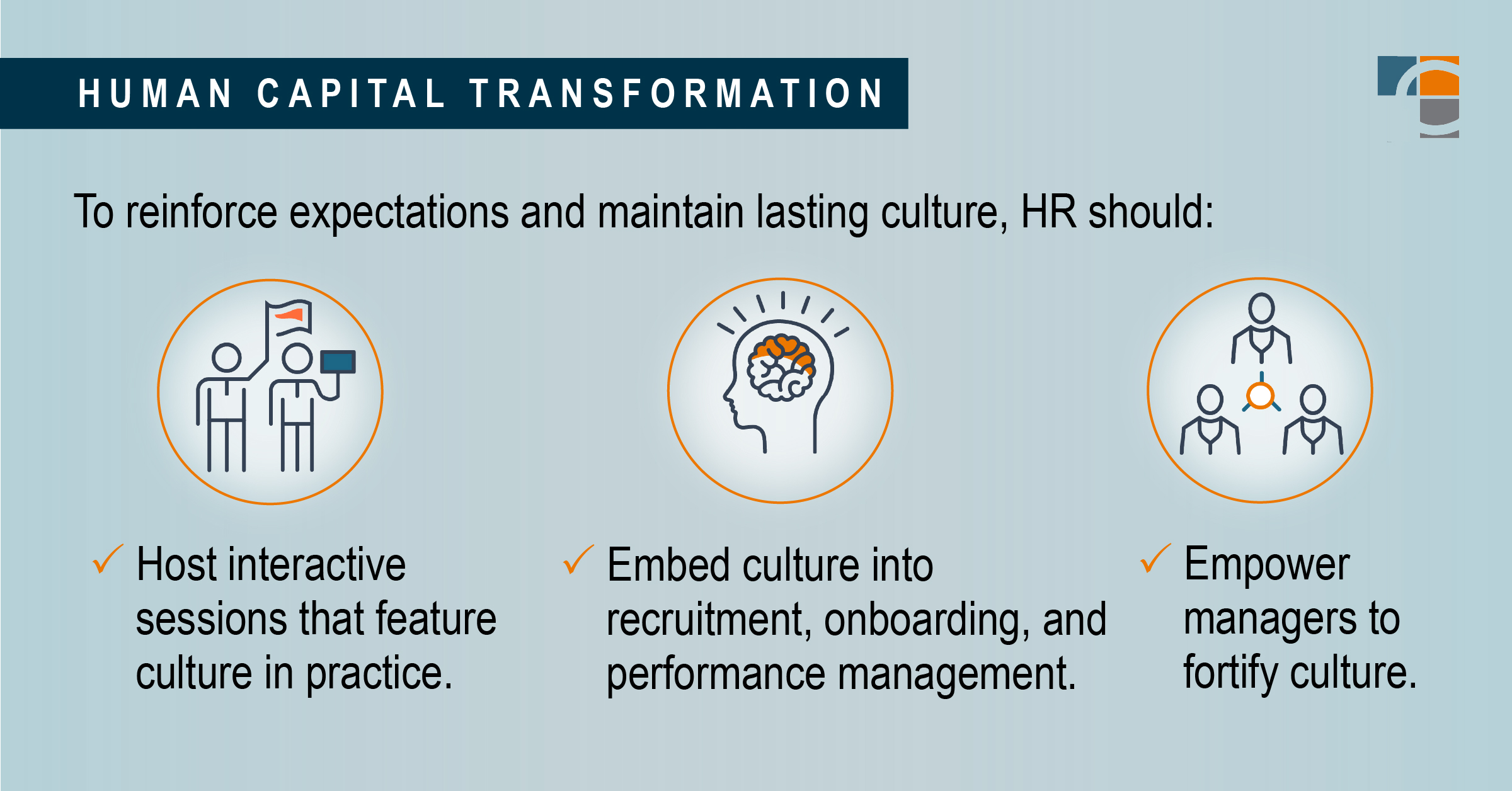The culture of new and growing companies tends to reflect the founders’ values and their early years as a tight-knit group of colleagues. However, when rapid growth occurs, the influence of significantly increased headcount, new strategic leadership, and shifts in governance can dilute the culture that had previously defined the business.
This is exactly what happened at unicorn startup Careem, as noted in Harvard Business School’s Accelerate program.
“As you hire rapidly, new hires learn culture from other recently hired staff who may not have had time to learn how things work at your company. Instead, they transmit values they learned in previous roles and that might not align with your culture.”
To combat the dilution of culture, leadership must shift priorities to ensure a focus on culture development and maintenance.
Here is how.
Mindset
Culture is not a separate entity from growth.
Growth influences culture and vice versa.
A report on hypergrowth from the World Economic Forum recommends companies “Transform the culture and make the team believe that hypergrowth is desirable through small steps and repeated communications.”
C-suite leadership must acknowledge the growth and openly invite all team members to share concerns about the impact of the growth, ideas about how to manage the growth, and feedback about how the culture can adjust in reaction to the growth. Additionally, leadership can leverage the growth to motivate employees about future opportunities for personal growth at the company as the business evolves as well as the possibility of obtaining increased benefits. Rapid growth can be a huge motivator for employees excited to be a part of a rapidly expanding business. 
Emphasis may need to be placed on different priorities within the business. For Careem, this meant de-prioritizing core product delivery.
“They determined to embed culture in every aspect of the company, so it could spread top-down, bottom-up, and horizontally. That meant they had to significantly shift how they spent their time.”
To genuinely embed culture within a growing company, leadership must establish its foundational cultural values and determine a plan for building those into the everyday experience of each employee. At a minimum, the cultural values need to be included in the leadership competencies so that employees’ experiences with leadership align with the cultural norms.
Additionally, leadership communications and decisions need to reflect the company culture. As Careem found, the culture needs to be reflected in how employees are asked to spend their time. For example, expectations for managers and leadership should define an allocation of time toward coaching, team building, and training. Culture is an experience, not words on paper. Work expectations and business norms have to support the culture that leadership wants to reinforce during rapid growth.
Trust
An aligned leadership team that models the values and behaviors of the company can be a powerful vehicle to maintain culture. However, oftentimes new employees who join in a period of rapid growth do not have interaction with leaders on a regular basis. They aren’t able to observe and embody these behaviors in their day-to-day practice.
Leadership must prioritize transparent overcommunication, working in partnership with HR.
In a Forbes article highlighting HR strategies to support SentinelOne through a period of rapid growth, their Chief People Officer, Divya Ghatak, shares:
“We have learned to form a connective tissue by overcommunicating. Being in front of the people and communicating, we are going to do whatever we can to make sure that we support people through this transition. Whatever the situation unfolds, I will be here to share the impact on the business. We wanted to make sure employees knew that we would figure this out together and that we were behind them; we would tell them.”
Behavior
Most companies have a set of core values to govern the expected culture of their teams. In absence of core values, you can use the company’s defined value proposition as a starting point. Once you have identified the values that serve as the foundation of your culture, it is important to define the behaviors that clearly reflect those values.

Often, values are written in abstract terms, forcing employees to interpret their meaning. Employees may not clearly understand what behavioral expectations are aligned with the values.
Leadership can build behavioral examples to help align expectations, effectively leading by example.
As Harvard Business Review suggests:
“The first step to scaling culture is to define each company value or belief into two or three behaviors that people can observe. For example, ‘respect’ can be defined as 1) being a great listener and 2) giving equal consideration to different ideas. The output of this exercise is a clear list of the top 10-15 observable behaviors that define your culture.”
Once leaders define behaviors, HR must update all relevant business systems to ensure the updated norms are incorporated. Beyond that, HR should help establish ongoing cultural programs that reinforce expectations and maintain a lasting culture, such as:
- Hosting or supporting fun, interactive sessions to help the team observe the culture in practice.
- Embedding the new or existing culture into recruiting, onboarding, and performance management. Ensure that cultural fit is a consideration in hiring decisions by introducing your culture to prospective employees. Cement the cultural experience during the onboarding period, recognizing that this period is always much longer than one might think. Build a performance management system that rewards behaviors that align with the culture.
- Leveraging your managers to consistently fortify culture. Prioritize recognition and modeling of target behaviors for all levels within the organization so new hires and others easily mirror the outcomes you seek.
Establishing an HR infrastructure that is defined and disciplined is a necessity during hypergrowth. Amid the chaos of change, culture must underpin all strategic decisions for the sake of current and future employees.
For more information on maximizing the value of culture at your organization, contact CrossCountry Consulting today.